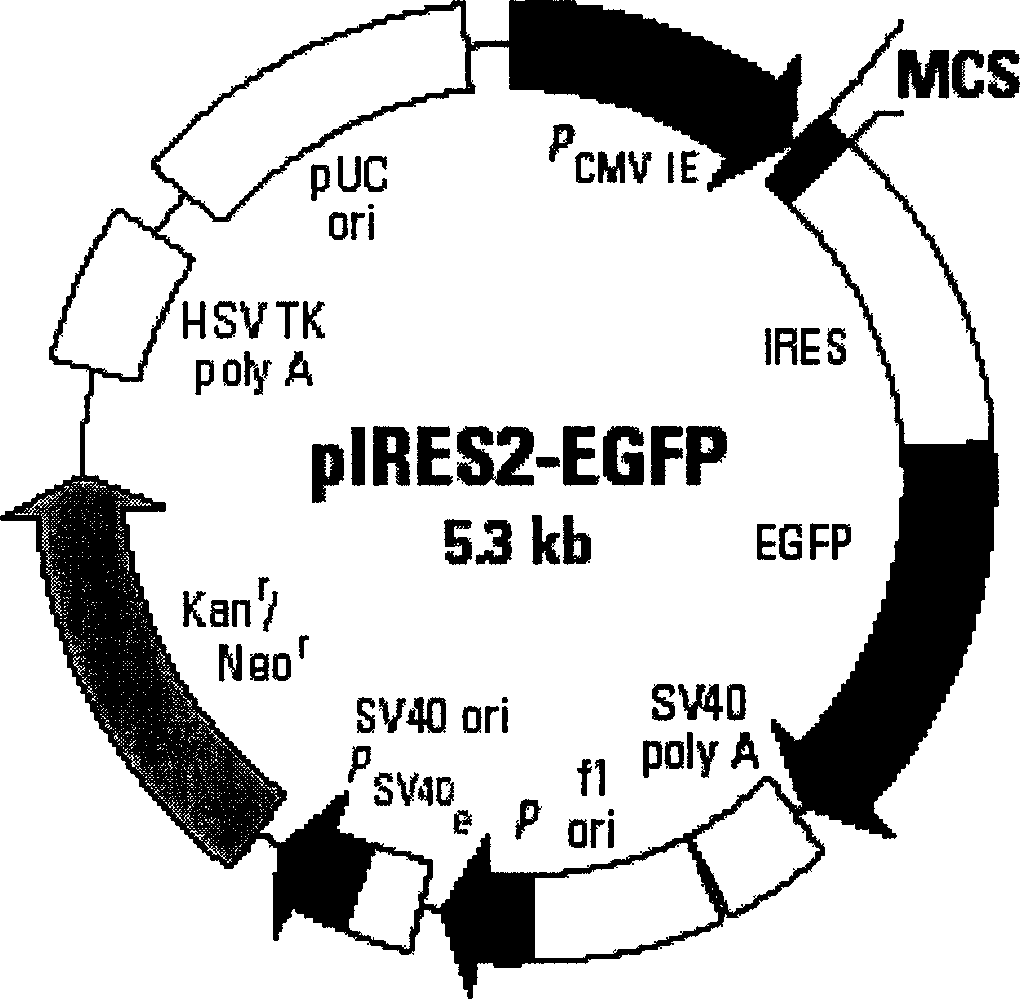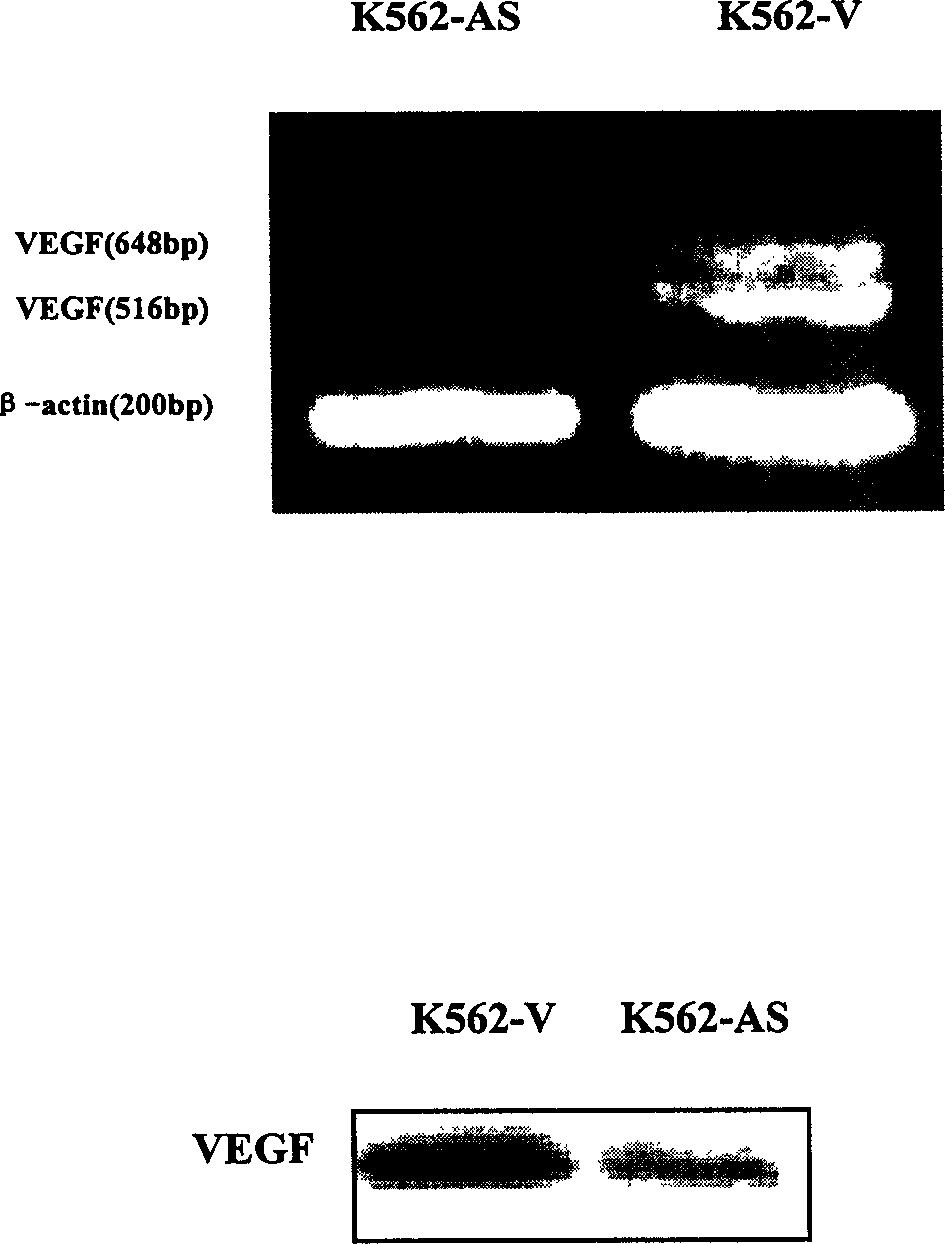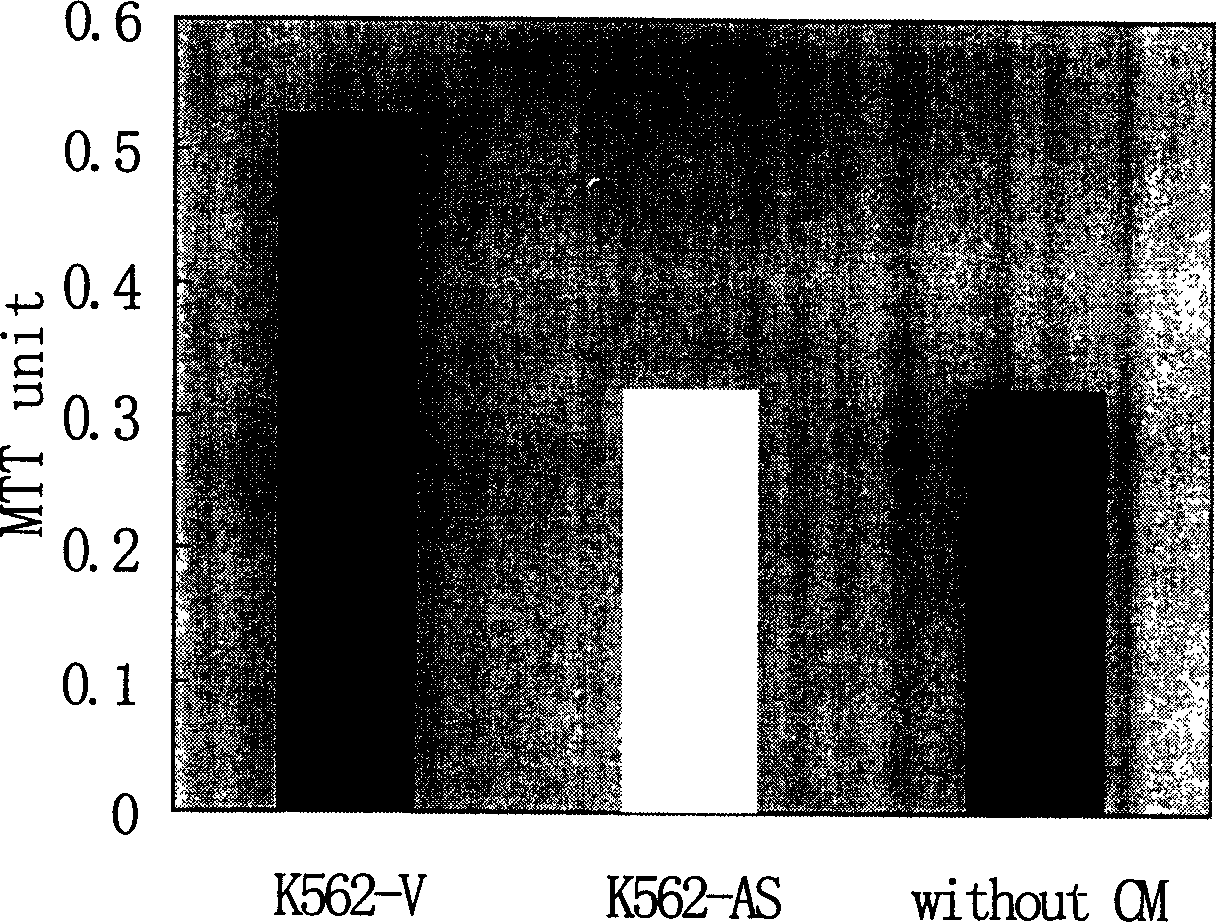Application of anti-sense VEGF gene sequence
A gene sequence and antisense technology, which is applied in the field of preparation of eukaryotic expression vectors for VEGF121 gene fragment recombination, can solve the problems of high toxicity and side effects, low remission rate and relapse rate, etc.
- Summary
- Abstract
- Description
- Claims
- Application Information
AI Technical Summary
Problems solved by technology
Method used
Image
Examples
Embodiment 1
[0008] Example 1: Determination of the effect of K562 positive clones expressing antisense VEGF and analysis of the expression of endogenous VEGF at the mRNA level and protein level
[0009] K562-antisense VEGF, K562-empty vector cells were divided into 1.5×10 6 / mL inoculated in a 6-well plate, cultured in serum-free medium for 3 days, centrifuged to pellet the cells in each well, collected the culture supernatant-20 and stored it for later use. The genomic DNA and total cellular RNA of K562-antisense VEGF and K562-empty vector cells were extracted respectively, and the integration of exogenous genes and the mRNA expression of endogenous VEGF were performed by PCR and RT-PCR. Results The target band was detected in K562-antisense VEGF cells, but no specific band was found in K562-empty vector cells, indicating that the antisense gene fragment carried by the recombinant vector had been successfully integrated into the genome of K562 cells. The results of RT-PCR found that the...
Embodiment 2
[0011] Example 2: Effect of culture supernatant of K562 positive clonal cells on proliferation and migration of umbilical vein endothelial cells in vitro
[0012] Umbilical vein endothelial cells in 5×10 3 / mL inoculated in 96-well plate, counted by MTT method after cultured for 2 days in M199 culture medium containing 8% fetal calf serum and 50% volume fraction of K562-antisense VEGF cells or K562-empty vector cell culture supernatant: per well 100 μL MTT was added, and after incubation for 4 hours, 10 μL DMSO was added to each well to terminate the reaction, and the absorbance value was measured at a wavelength of 570 nm ( image 3 ). Add 500 μL K562-antisense VEGF cell culture supernatant or K562-empty vector cell culture supernatant to the lower layer of the perforated plate, 10 5 Umbilical vein endothelial cells were resuspended in 100 μL M199 culture medium, and after incubation for 4 hours, the number of umbilical vein endothelial cells migrating to the lower layer of...
Embodiment 3
[0013] Example 3: Proliferation and apoptosis of K562 positive cloned cells in vitro
[0014] K562-antisense VEGF cells or K562-empty vector cells at 1×10 4 / mL inoculated in a 96-well plate and cultured in serum-free medium. From the first day of inoculation, 4 wells were taken every 24 hours until cultured to 72 hours, and the growth curve of the cells was measured by MTT method. Or K562-antisense VEGF cells or K562-empty vector cells at 1×10 5 / mL inoculated in a 6-well plate, cultured in serum-free medium, 3 wells were taken every 24 hours, and placental blue staining was used to count viable cells until 72 hours. The results showed that the self-proliferation ability of K562 cells expressing antisense VEGF was lower than that of K562 control cells transfected with empty vector ( Figure 5 A).
[0015] K562-antisense VEGF cells or K562-empty vector cells at 1×10 5 / mL inoculated in 6-well plate, cultivated in serum-free medium for 72 hours, centrifuged to pellet cells,...
PUM
 Login to View More
Login to View More Abstract
Description
Claims
Application Information
 Login to View More
Login to View More - R&D
- Intellectual Property
- Life Sciences
- Materials
- Tech Scout
- Unparalleled Data Quality
- Higher Quality Content
- 60% Fewer Hallucinations
Browse by: Latest US Patents, China's latest patents, Technical Efficacy Thesaurus, Application Domain, Technology Topic, Popular Technical Reports.
© 2025 PatSnap. All rights reserved.Legal|Privacy policy|Modern Slavery Act Transparency Statement|Sitemap|About US| Contact US: help@patsnap.com



